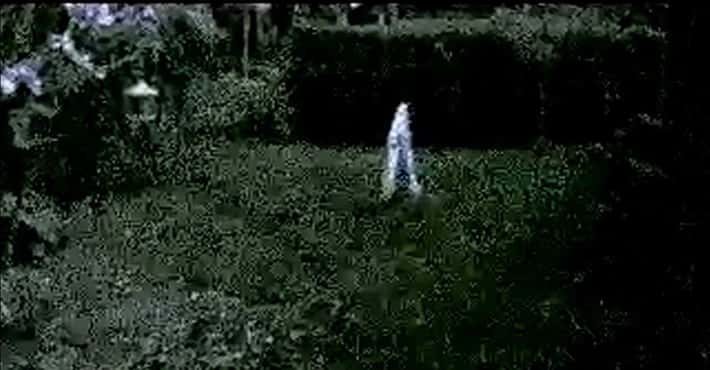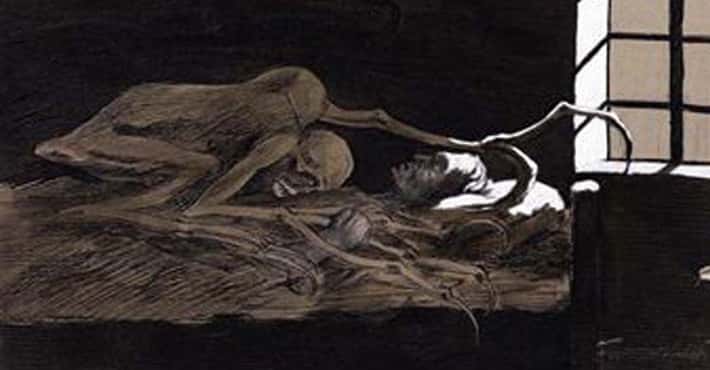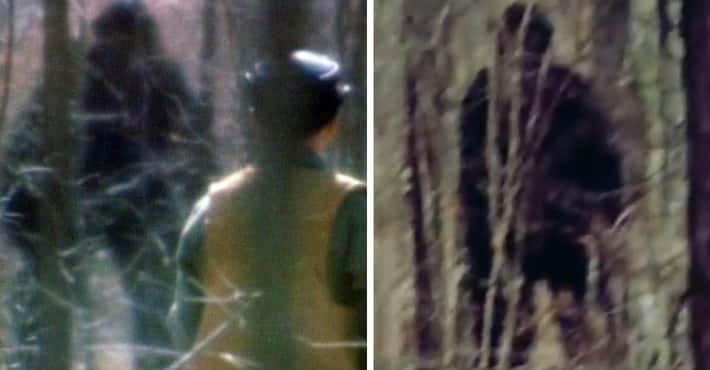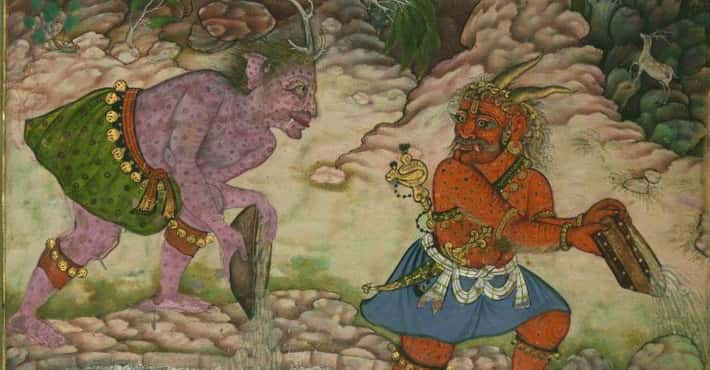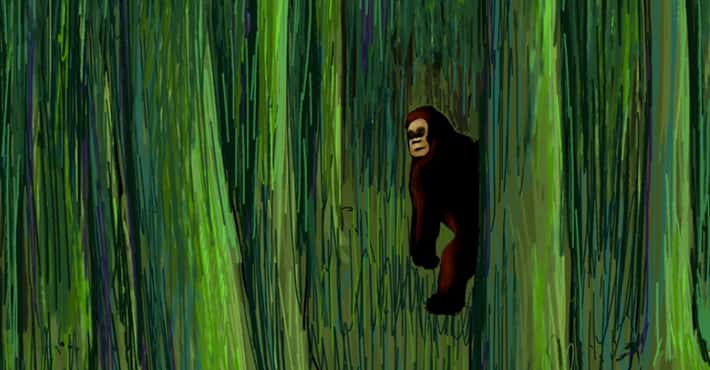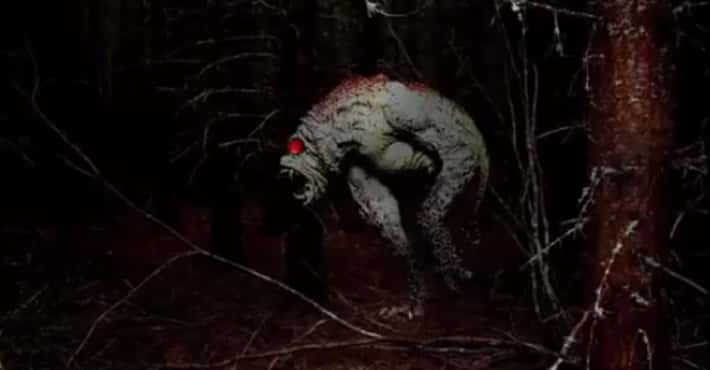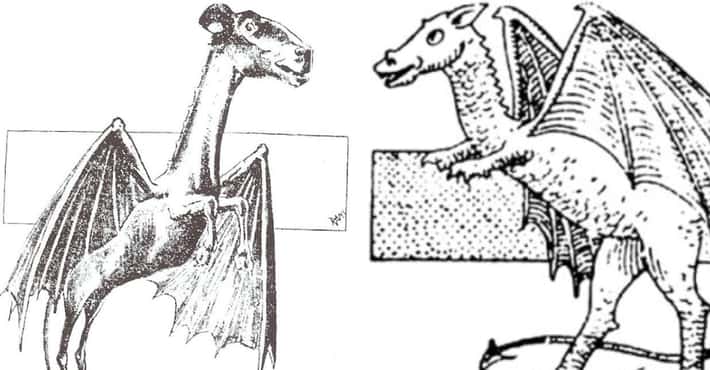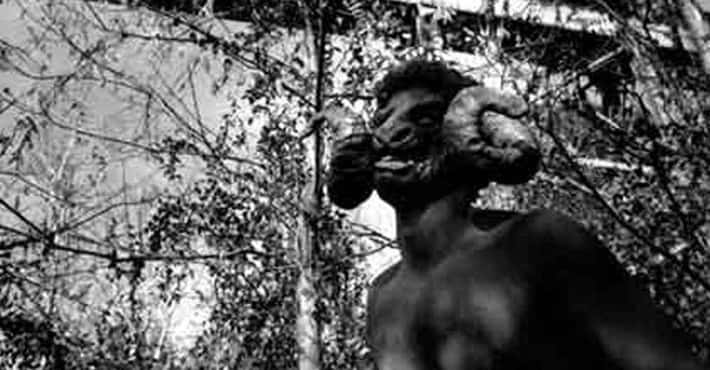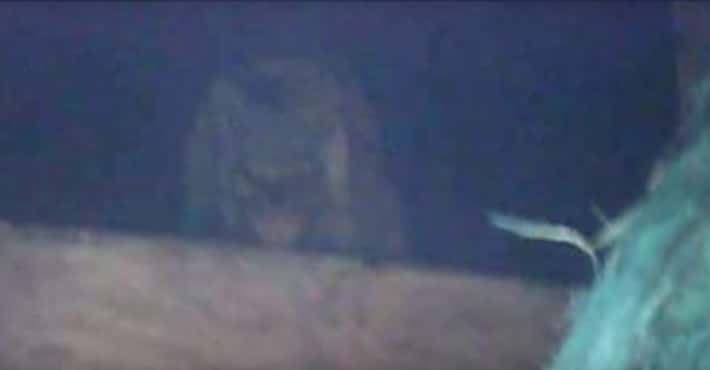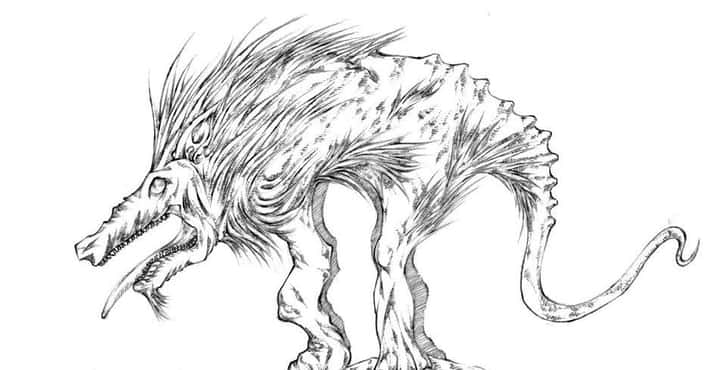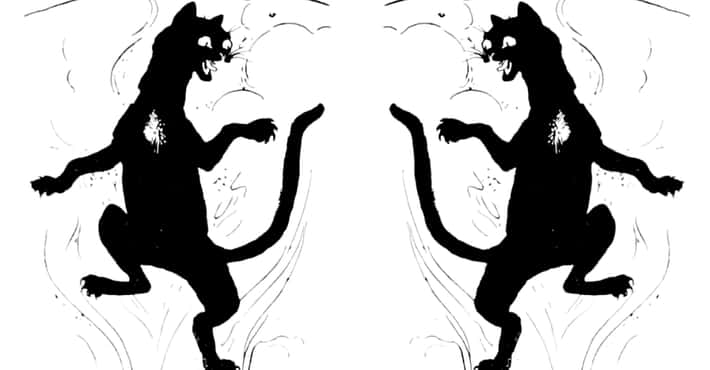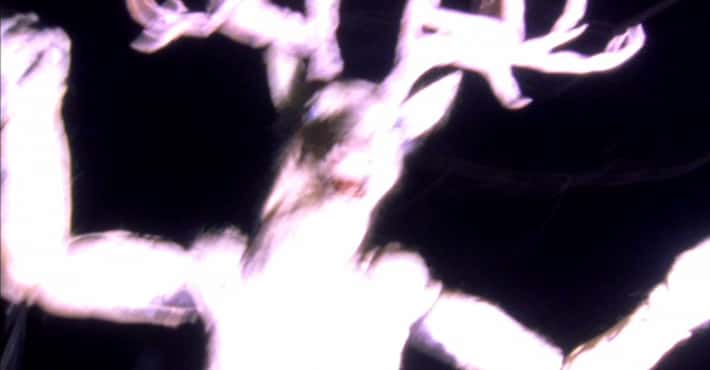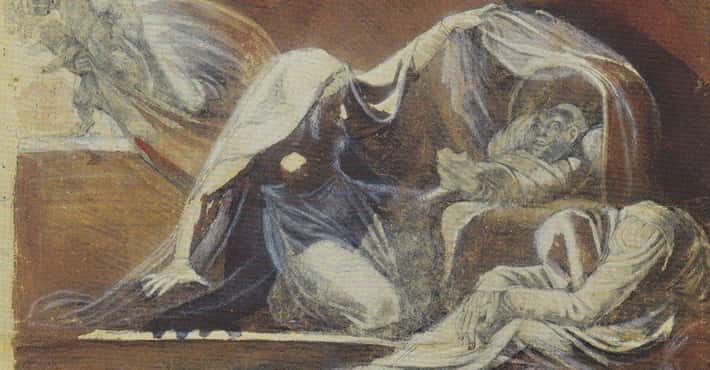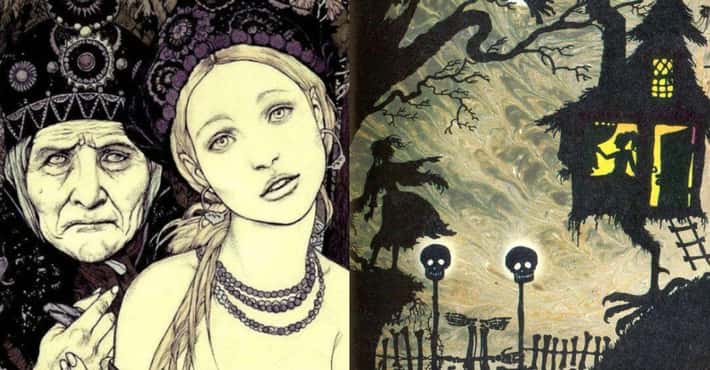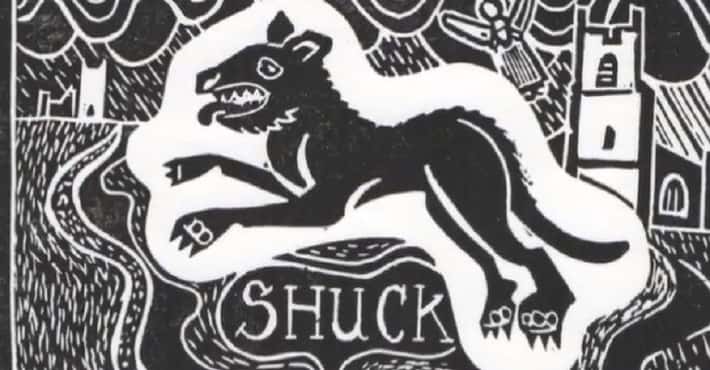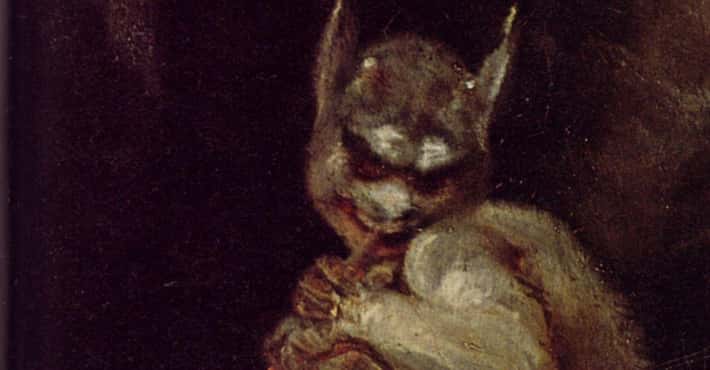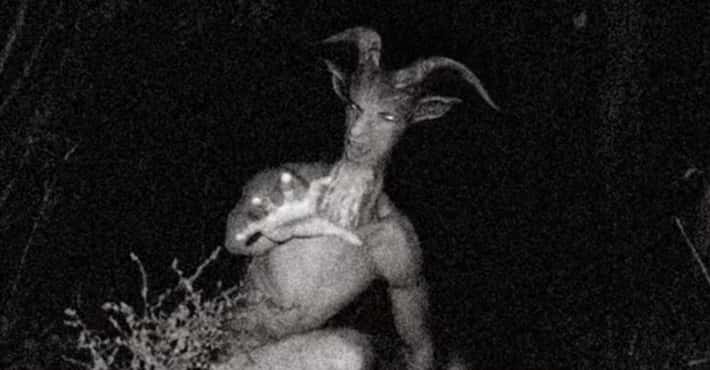You May Know Bigfoot, But Have You Ever Heard Of Plant Cryptids?
Cryptozoology, or “cryptids” for the common folk, has fascinated humankind for thousands of years, beginning as early as the 15th century BCE. While media has glamorized the field, drawing images of wild-eyed creature-hunters chasing anomalous beasts into the night, cryptozoology is really just the study of unknown, legendary, or extinct animals whose existence or survival is disputed or unsubstantiated.
But reports of strange organisms don’t stop at the animal variety. Enter cryptobotany (sometimes also called cryptophytology), or simply the study of plant cryptids. Just like its animal counterparts, this field of study focuses on the bizarre plants of folklore and legend that have evaded scientific confirmation. While there may not be any captivating security camera footage or blurry photographs of these elusive plants, some reports are surprisingly compelling.
Let’s see which plant cryptids you’ll tentatively approach with a watering can and which ones might just use you for sustenance.
- 1116 VOTES
The Devil’s Snare
“Devil's Snare, Devil's Snare… It's deadly fun, but will sulk in the sun.” While many only associate the Devil’s Snare with one of many trials guarding the Philosopher’s Stone in Harry Potter, this terrifying plant has a longer, more frightening history than children’s fantasy can convey.
Deep within the innermost swamps of Nicaragua, a vampiric vine awaits its next victim from whom it can drain blood. Natives to the area named it the Devil’s Snare and described it as an octopus-like plant that not only captures its prey but seems to somehow absorb it.
One eyewitness report claimed to have encountered this deadly plant near Lake Nicaragua after hearing sounds of pain and terror from his dog. When he found the source, he discovered his dog entangled by a network of roots and fibers covered in thick, adhesive gum. As the eyewitness struggled to cut his dog free, the plant fought back, wrapping its vines around his hands and leaving his flesh red and blistered.
Thankfully, he managed to free his petrified pup, although it was wounded with strange suction marks where the vines had made contact with the skin. After his ordeal, he asked locals about the plant and learned it was well-known and feared by the community.
Another report from Africa in 1852 dubbed a similar plant a “vegetable serpent,” describing it as a spotted serpent that drags itself along on the ground with a sickly flower for a head, a white and soft flesh, and a cartilaginous frame filled with yellow marrow. This report had no mention of vulnerability to sunlight, but should you encounter one in the wild, perhaps try a flashlight.
- 2112 VOTES
The Cow-Eating Tree
It was midday on October 18, 2007, and young Pushpalatha from the small village of Patrame, India, made her way through the forest to visit a local shop. Her normal day ground to an abrupt halt, however, when she witnessed a tree lift a struggling cow by its hindquarters from the ground. Despite the cow’s writhing, the tree held fast and tangled its limbs around the animal’s tail and hind legs.
Understandably frightened, Pushpalatha ran to get her mother and a local farmer working on a nearby fence. While her mother warned her not to touch the tree, the farmer, Vasanna, quickly jumped in and cut the tree’s branches to release the cow. The tree reportedly did not release its iron grip on the cow until it was cut down.
As the story went viral across the early internet, the owner of the rescued cow told reporters trees like this were known locally as Pili Mara, or "Tiger Trees," and were sometimes mentioned in folk songs. Another villager recalled a similar event in which a Tiger Tree ensnared a bull, and a group of villagers had to cut the branches to release the animal. They also claimed Tiger Trees could be climbed if the tree was pierced with an iron sickle first, as iron is believed to have power over carnivorous trees.
Unfortunately, the original reporting on these incidents is a bit garbled, so it’s hard to say if these events are truly separate or different accounts of the same events. While localized to India, this story seems to ring true with other stories of carnivorous trees around the world and the power of protection iron offers from spirits and monsters.
- 3123 VOTES
The Moss Man
Roped off by tangled vines and roots, corralled by nine-foot-tall saw grass, and guarded by unknowable, murky depths, Florida swamps could be hiding anything. Gators, exotic pets turned loose, spiders that are clearly God’s mistake, and, of course, the Moss Man.
Tales of this seven-foot-tall, bipedal humanoid made of moss and vegetation date as far back as the 1500s, when a young girl from the local tribe was captured, killed, and beheaded, after which her attackers tied her head to a tree in the swamp. The tribe’s medicine man allegedly used his magic to call upon the spirits of the swamp to seek out vengeance, causing the girl’s head to take a human form of weeds, branches, and other vegetation to hunt down her murderers.
Other versions of the story claim the medicine man created a golem of vegetation to keep away the pillaging Spaniards. Aside from his great height, the Moss Man is said to have eyes that glow an amber or reddish hue and possess a hypnotic quality.
But a sighting in 1978 firmly wove the Moss Man into folklore when a couple strolling along a Boca Raton beach along the Everglades reported seeing a humanoid figure made of moss, grass, and leaves. They claimed he glared at them with glowing red eyes, prompting them to flee. When they returned later, the creature was gone, and only bits of Spanish Moss remained strewn about the beach.
- 472 VOTES
The Ya-Te-Veo
Humanity's fascination with carnivorous plants has gripped us for centuries. After all, plants and trees are often seen as vibrant, life-giving sentinels of nature who just want water and sunlight - the idea of certain ones being stone-cold killers of insects or small mammals feels strangely personal. What if your Monstera plant or oak tree in the backyard goes after humans?
Well, that’s exactly what legend says happened with the Ya-Te-Veo, a well-known carnivorous tree found in Central and South America, Africa, and on the shores of the Indian Ocean. Described as having a thick, stout trunk and long, tendril-like branches used to catch its prey, some reports even claim it has an eye to locate potential dinner.
In 1881, a letter was published from German explorer Carl Liche (sometimes spelled Karl Leche), describing a terrible tree called the Ya-Te-Veo and how it ate members of the “Mdoko tribe” of Madagascar. He notably described his own encounter with the tree as it coiled its tendrils around a filly, strangling the young horse “with the cruel swiftness and savage tenacity of anacondas fastening upon their prey.” Although the story was later revealed to be a fictitious work of writer Edmund Spencer for the newspaper New York World, the appearance of similar stories of carnivorous plants and trees in other parts of the world (see the Cow-Eating Tree of India) raises interesting questions.
- 5104 VOTES
The Leshy
The Leshy has had some moments of stardom in recent years, from being featured as an enemy in the video game Cult of the Lamb to getting a moment in the limelight as Leshen in Netflix’s The Witcher. However, this plant cryptid celebrity isn’t an invention of the modern world. In fact, the Leshy comes from Slavic mythology and was seen as a god of the forests and hunting. He was considered a wild and spiteful being who prowled the deepest backwoods of eastern Europe.
Legend describes him as a giant, gaunt man with tangled green hair covering his body, and skin rough like tree bark, but that wasn’t his only form. This tree man was no friendly Ent from Lord of the Rings - Leshy was also known to be a shapeshifter that sought to trick those who walked his woods and lead them to their demise.
Many stories accuse him of kidnapping children (likely used to frighten naughty kids), while others framed him as more of a neutral trickster spirit that guarded the forest and could often be heard singing, laughing, or even whistling in the woods.
- 676 VOTES
The Honey Island Swamp Monster
First spotted in the abundant Honey Island Swamp of Louisiana in 1963, the Honey Island Swamp Monster has long been blamed for the death of animals and the unexplained disappearances of local children.
Sometimes described as a cross between an alligator and a chimpanzee, the Honey Island Swamp Monster stands over seven and a half feet tall and weighs between 400 to 500 pounds, with a thick coat of matted swamp weed and grayish hair. While this has earned it the nickname “Louisiana Wookie,” this doesn’t account for its yellow reptilian eyes and the stench of death, the latter of which many attribute to the natural smell of marshlands.
Hunters made early sightings of the Honey Island Swamp Monster, reporting a towering humanoid mass of plant matter prowling the swamps and leaving webbed, three-toed footprints in its wake. A rather unique legend surrounding this swampy beast involves an alleged train wreck that occurred near Pearl River in the early 1900s. The story goes that a train of exotic circus animals, namely chimpanzees, escaped in the accident and bred with alligators.
Delightfully fantastical as the myth may be, monkeys and alligators cannot interbreed. Others speculate this swampy monster is just Bigfoot adapted for a more aquatic environment. Whether it's swamp weed coming to life or a marsh-type Bigfoot, Honey Island residents and visitors still see this mysterious entity in the swamp to this very day.
- 7102 VOTES
The Cactus Cat
Cats are often accused of being a bit prickly (according to dog lovers), but this plant cryptid deserves the reputation. The Cactus Cat is described as a bobcat-like creature with thorns for fur, sharp, protruding bones, and a branched tail. Most sightings have been reported in the Southwestern desert of the US, most often in California, Nevada, and New Mexico, although there have been a few sightings in Colorado.
Early 19th-century legends of the Cactus Cat claim this creature came out at night to slash open cacti and drink the fermented sap within to get a nice buzz and stumble about. While they were reportedly not aggressive and rarely attacked humans (unless they stole its beloved cactus booze), contemporaries of the time claimed the Cactus Cat had a haunting “wail” that filled the desert night air, accompanied by the chalky sound of its bones rubbing against each other.
- 859 VOTES
The Naree Pon
This Thailand-based plant cryptid is supposedly spotted in the infamous and perilous jungles, appearing half human and half plant. While they're known for throwing rights rocks at those passing through the jungle, the Naree Pon or Nariphon actually have an origin in Buddhist mythology.
According to legend, Vessantara’s wife often went into the forest to collect fruits but feared attacks from the hermits and yogis who lived there due to her beauty. The God Indra created 12 special Nariphon trees that would bear fruits resembling the wife’s beauty to distract the men and allow her to collect the fruits in peace. It’s said the men would take the fruits back home and, after making love to them, would sleep for four months and lose all their powers.
Two alleged specimens of this plant cryptid are housed at a sacred temple in Bangkok, Thailand, but without permission to examine them, it’s difficult to say if they are legitimate evidence of the Naree Pon or if they will remain a legend.
- 952 VOTES
The Kapre
Named from the Arabic word “kafir,” meaning a non-believer in Islam, the Kapre is a Philippine creature often called a tree giant. With its towering seven-to-nine-foot height and hairy, muscular physique, sightings often mentioned a powerful odor from the cigars it smoked and the wearing of an indigenous Northern Philippine loincloth known as bahag. Its name is deeply tied to early Arabs and the Moors, who used it to refer to non-Muslims, but it was later co-opted by the Spanish to prevent Filipinos from assisting escaping African slaves brought to Latin America.
Despite the name’s sordid past, the creature called the Kapre is said to dwell in big trees, wears a belt of invisibility, and possesses a magical white stone that grants the wishes of any who obtain it. Those who claim to have seen the Kapre report rustling tree branches without cause or hearing loud laughter from an unseen being. Others recall seeing plumes of smoke with no source or big, red eyes glaring at them from the trees.
- 1069 VOTES
The Vegetable Lamb Of Tartary
Hailing from Central Asia, the Vegetable Lamb of Tartary was believed to grow sheep like a tree grows a fruit, connected to the plant by an umbilical cord. The Vegetable Lamb was described in Henry Lee’s 1887 book, The Vegetable Lamb of Tartary, to be both living animal and plant. Beliefs surrounding whether the Vegetable Lamb is flesh and blood like a normal lamb or more plant-like have shifted over time, along with speculation about whether or not it could survive without the umbilical cord to the plant.
Interestingly, when comparing the Vegetable Lamb to similar tales, the Yeduah of Jewish folklore is a very close match. The Yeduah lore features a lamb that’s sprouted from a stem growing directly from the earth. Severing the connection between lamb and stem would be the only way to kill the creature so its bones could be used during prophetic ceremonies.
In some versions of the tale, the lamb plant is actually dangerous and will capture any poor soul foolish enough to wander within its reach. With these similarities, Jewish folklore may be the origin of the Vegetable Lamb of Tartary.



